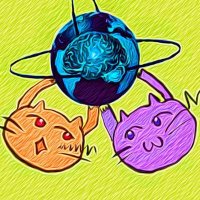
Corey Keller
@drcoreykeller
Brain Stimulator | Asst Prof @StanfordMed | Co-founder @AltoNeuro | MD/PhD | My lab @KellerStanfordU develops methods to modulate human brain circuits.
ID: 1301908170420305920
http://precisionneuro.stanford.edu 04-09-2020 15:41:15
688 Tweet
2,2K Followers
1,1K Following


Delighted to share this work by Sara Parmigiani & our team Precision Neurotherapeutics Lab @ Stanford Wu Tsai Neurosciences Institute to improve noninvasive measures of prefrontal excitability!! 🧠⚡️ Soon we can use these to monitor treatments & develop personalize protocols for TMS, ketamine, and other interventions

Ever wonder why some brain regions are more excitable? Using intracranial stim and recordings in humans, our team led by @Momi Sara Parmigiani Wu Tsai Neurosciences Institute andrea pigorini John Griffiths Precision Neurotherapeutics Lab @ Stanford discovered a fascinating hierarchy in these neural responses 🧠⚡️

🧠 NEW PAPER: How do we capture excitability noninvasively in mood and emotion networks in the human brain? Here, we used real-time optimization to improve these measures! Sara Parmigiani Precision Neurotherapeutics Lab @ Stanford IFCN and its Clinical Neurophysiology journals doi.org/10.1016/j.clin… 1/7

Why do some refractory depression patients respond to TMS while others don't? New bioRxiv Neuroscience preprint: We identified distinct signatures that predict treatment outcomes by combining TMS-EEG with whole-brain computational modeling in 90 patients. biorxiv.org/content/10.110…

Grateful to share that I’ve been awarded a 1(+2) year grant from Sigrid Jusélius Stiftelse ! This means I get to start building my own team — can’t wait to get started! 🥳 🧠 ⚡ #tms #tmseeg #depression #neuroimaging #biomarkers Aalto University



Promoted!Grateful for the amazing mentorship & collaboration🙏Alik Widge Aaron Boes Nolan Williams Angelique C Paulk Scott Linderman Wu Tsai Neurosciences Institute Noah S Philip MD Amit Etkin Nick Trapp Jeff Daskalakis Josef Parvizi Stanford Medicine Precision Neurotherapeutics Lab @ Stanford Jerry Yesavage Rachel Manber Alan Schatzberg


Our paper was just published in Nature Communications. Acute pain leaves reliable neural and facial signatures that can be tracked in natural contexts, thus promising objective, real-time pain monitoring. With Stanford Neurosurgery Corey Keller, Vivek P. Buch, MD Josef Parvizi



Emotions are core to the human experience 😆😮🙂😊☹️😠😳😑. But how do they arise? Our brain-wide ⚡recordings in humans and mice reveal some answers Science Magazine. A big team effort and debut paper from Stanford University's new Human Neural Circuitry program. bit.ly/4dEyX7Z


💥Emotions are central to the human experience 😠😳😃☺️😔😕😮🙂 Our Human Neural Circuitry team just took a step towards understanding how they arise–using brain-wide electrical ⚡recordings in humans and mice Science Magazine Read on for more… 1/n


Out now in Brain Stimulation from Nolan Williams & crew - important technical breakthrough in interleaved TMS - how cool is this… sciencedirect.com/science/articl…

📢A lab’s 1st baby-step is always memorable! First #iEEG evidence that #DLPFC #TMS🧲 evokes responses in #sgACC now out Brain Stimulation: bit.ly/4mX07ei Huge thanks to University of Iowa Neurosurgery Aaron Boes Nick Trapp Xianqing Liu Corey Keller UI Stead Family Department of Pediatrics Iowa Neuroscience Institute National Institute of Mental Health (NIMH) 💛🖤❤️


Incredible team effort! 🧠⚡️First iEEG proof of DLPFC→sgACC connectivity via TMS. Proud to be part of this milestone study! Jing Jiang Aaron Boes Nick Trapp Precision Neurotherapeutics Lab @ Stanford Wu Tsai Neurosciences Institute

🧠⚡ Exciting to see our work getting coverage! Our new EEG algorithm improves brain signal quality by reducing muscle artifacts when stimulating prefrontal cortex - a key step toward better brain stimulation treatments. bit.ly/4e1LT7T Wu Tsai Neurosciences Institute Precision Neurotherapeutics Lab @ Stanford

![IFCN and its Clinical Neurophysiology journals (@clinicalneuroph) on Twitter photo [TMS-EEG] Parmigiani, Cline, et al.: "Enhancing our ability to measure prefrontal excitability is important for monitoring pathological states and treatment response." doi.org/10.1016/j.clin… [TMS-EEG] Parmigiani, Cline, et al.: "Enhancing our ability to measure prefrontal excitability is important for monitoring pathological states and treatment response." doi.org/10.1016/j.clin…](https://pbs.twimg.com/media/GnxTa1_WIAA0l4y.jpg)
